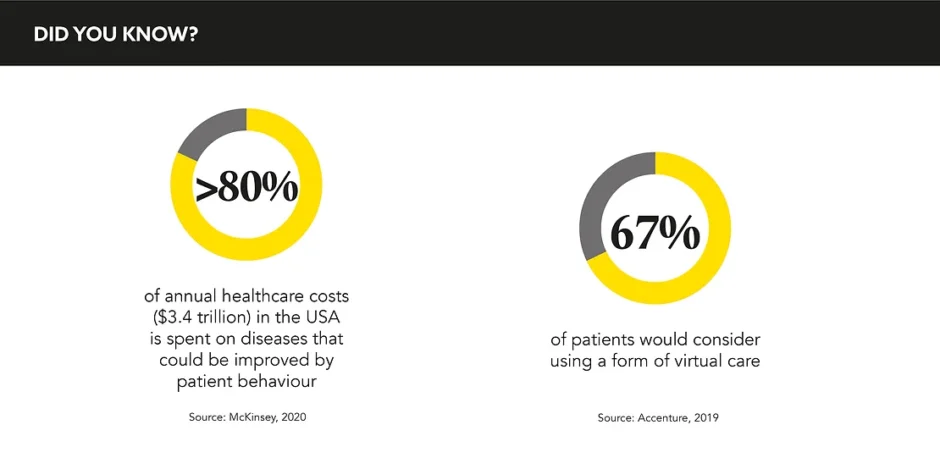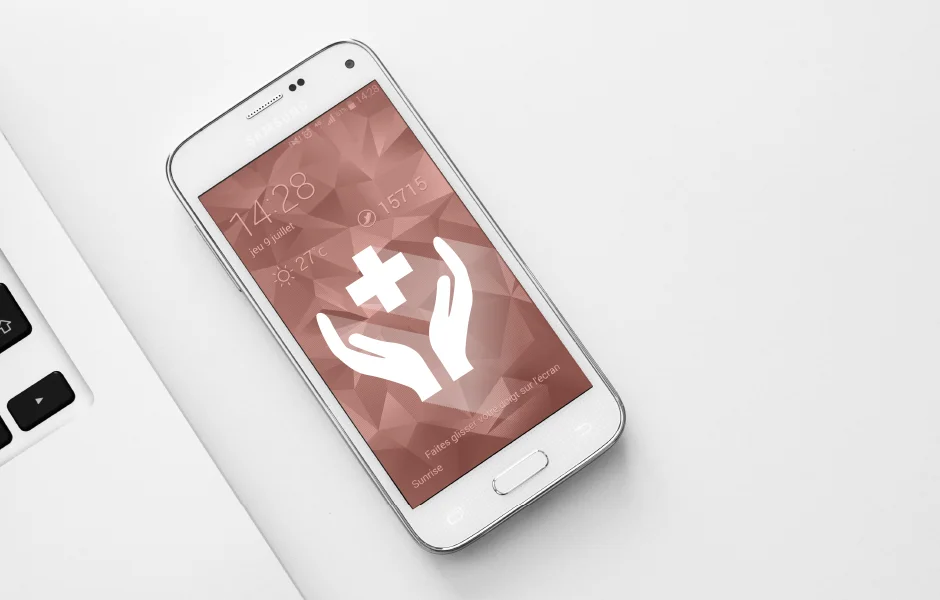More and more digital therapeutics are hitting the market, taking the patient experience of healthcare into a more innovative, less invasive place, but are these digital devices worth the hype?
Words by Michaila Byrne
From the hype of 3D glasses to the Wii Fit craze, the technology market is swarming with fleeting fads and short-lived trends that pass almost as soon as they appear on our radar. Unlike other gadgets and gizmos, however, digital therapeutics are here to stay.
Having demonstrated their ability to improve health outcomes, the pharmaceutical industry is acknowledging the value and pragmatic potential of these products. Does this legitimatisation of digital therapeutics render them of equal value to more traditional treatments?
Why now, why them?
In this time of COVID-19, pharma is accelerating digital capabilities in a bid to mitigate the loss of face-to-face interactions. Patients’ healthcare routines cannot be put aside right now, and digital therapeutics are a promising remedy.
Speaking at eyeforpharma Barcelona virtual 2020, Jonas Duss, US CEO, Co-Founder, Kaia Health, outlines their use: “Many chronic pain sufferers don’t get sustainable treatment. They get prescribed painkillers, physiotherapy, and surgery, all of which are solutions for acute pain and only really provide temporary relief.”
The theory that digital therapeutics are only applicable to mental and behavioural conditions is a misconception and similarly, the notion that they will replace traditional care models is false.
More holistic approaches to the patient experience must be explored. Jeremy Sohn, VP, Global Head of Digital BD&L, Novartis, reiterates: “If we can expand the way we think about the experience of patients while they are managing and dealing with their disease, we better treat the 360° experience that the patient has.”
For patients living with migraines, diabetes, asthma, and addiction, who are struggling with nutrition, digital therapeutics can unlock and address unmet needs across the disease spectrum.
The adoption challenge
To jump-start industry-wide adoption, pharma must convince payers that products directly treat, prevent, or manage a given disease within a real-world setting. Digital therapeutics must be subject to the same rigorous standards of safety and efficacy imposed on any other therapy or drug.
Jessica Shull, European Lead, Digital Therapeutics Alliance, corroborates: “There needs to be a methodology in place to collect evidence that strengthens the health and economic outcomes argument. Clinical trials should be published in peer-reviewed journals to back up these claims.” Real-world evidence is also a necessary precursor for understanding, buy-in, and cohesion across pharma.
It’s not disrupting the current care model; it is enhancing it
These products are neither wellness apps nor dosing calculators, rather they are CE marked medical devices and evidence-based interventions with a variety of active mechanisms. Through easing the burden of the disease, patients are gifted newfound space, time, and energy to better manage their disease.
To achieve this telos, it is important that patients are brought onboard early in the development stages, to test industry assumptions of the patient experience over and over.
Megan Coder, Executive Director, Digital Therapeutics Alliance, stresses that as disease states evolve, patient goals also change: “If a product isn’t developed with the patient, caregiver, and clinician in mind throughout the whole process, then you may lose a lot of the validity and utilisation of that therapy.”
Clear win for clinicians
Let us not forget, clinicians are users too. Doctors will no longer require a singular, all-encompassing update from the patient every 90 days if they can view the patient’s progress at regular intervals.
David Verdura, Chief Operating Officer, Curelator, describes digital therapeutics as having an additive effect: “This is a tool that is very useful for the patient. The other user is the physician; they get the information from their patients in a dashboard format. It’s an incredible tool for them to help manage the journey of their patient. It’s not disrupting the current care model; it is enhancing it.” Credibility in this respect is essential and having digital therapeutics be recommended and prescribed by clinicians will assist in activating that ecosystem.
Force for change
The culture around digital therapeutics needs to be much stronger since it can address a depth and breadth of issues that few medications can. There are, of course, still unmet needs in healthcare and these evidence-based products have the potential to offer patients a real sense of autonomy.
Working in tandem with traditional treatments, digital therapeutics have the benefit of assisting physicians, supporting patients, and ultimately generating improved health and economic outcomes.
With doctors increasingly prescribing products alongside more traditional treatment paradigms, we are close to recognising digital therapeutics as possessing equal value to drugs.










